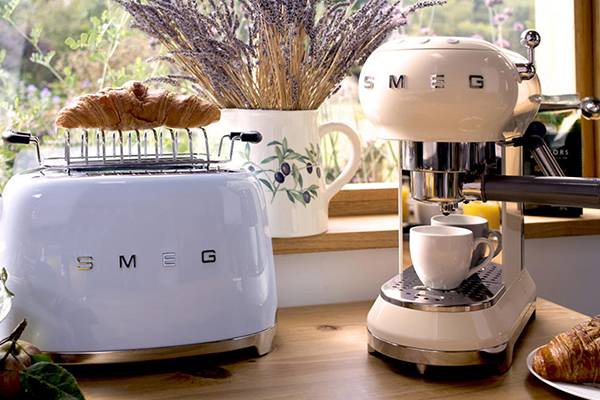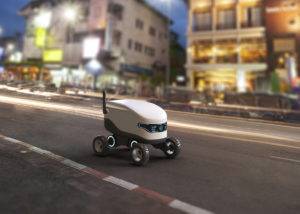
SMEG Customer Case Study
Download this data sheet to explore the features and benefits of Naveo Commerce for Enterprise Grocery.
In this explainer, we investigate what it takes to make a top headless commerce platform for the grocery eCommerce market.
A headless architecture within ecommerce has become a vital asset for large-scale retail businesses to sell online. It offers a decoupled frontend and backend approach to user interface and order management development, when compared to traditional web applications (more on that later).
Naveo Commerce deploys a modular end-to-end Connected Commerce solution for retail and grocery markets. This eGrocery solution offers API-led, headless technology within its modules.
Our developers have worked alongside some of the biggest names in retail and tweaked our system accordingly over the last ten years to deliver the perfect solution for grocery home delivery and retail ecommerce.
Here is how Naveo deploys a headless commerce platform to offer the ultimate solution for retail ecommerce.

A completely headless eCommerce solution will progress a retail eCommerce model, by decoupling the front-end and back-end solution.
By this, we mean that the eCommerce user interface that a shopper will see does not need to be built upon the same code as the administrative back end. Instead, business leaders or IT administrators can select from an infinite choice of ready-to-go APIs to pair their solution to.
This benefits a business in four main ways: Security & Site Speed; Data Analytics; Administrative Freedom, and Time to Market
Headless commerce architecture offers a lower risk of a website slowing down or going offline completely, as in most cases there are simply fewer lines of code available to break. A break in code of traditional system can cause a chain of reactions from which any number of website errors could spring from.
A business can be more guarded from this by introducing API gateways into a decoupled microservices style solution. In addition, this reduces the number of applications needed for an internal or expensive external development teams to design, create code for and then test.
Ecommerce experiences can often hinge on small details easily missed by the human eye.
Perhaps a less obvious benefit of an API-led technology stack would be the addition of smart data. Often when partnering your website with another service or progressive web app for a particular function, that service will provide performance analytics within the bundle.
This can unlock a raft of previously unconsidered statistics for data analysts, marketers, or senior leaders to consider when in the service discovery stage of research.
From a backend perspective, a headless solutions offer far greater opportunity for customization. This can help a small team of administrators or decision makers tailor their offerings to shoppers in a plethora of ways, perfectly matching their customer promise and desired customer experience.
In addition, whole departments can shave time off their regular duties by AI-driven microservices. Consider the time taken to copy a customer record from a traditional eCommerce system into a separate CRM. With a headless API, services communicate information at the desired point of data entry (such as payment).
Headless Commerce is fast. Not only in its user experience, but also in its deployment. Typically, Naveo Commerce can launch its Connected Commerce solution for grocery eCommerce within a matter of weeks. This is far longer than it would take for any in house development team to design and create.
– Click to demo our fantastic headless Connected Commerce solution
A monolithic system will have a presentation layer coupled or fixed to its backend operation.
This works well for smaller online businesses with low daily transactional sales. However, when it comes to industries such as fast-fashion or grocery, profit margins are slim, and competition is high. Therefore, the slightest advantage in online customer journey can swing user experience towards a competitor.
In this environment, data is key. However, even if data is available to marketers and analysts to use, monolithic architecture is not easy to change from an operational standpoint.
Within the monolith, a requested change can lead to expensive overhaul which may even require a system down time due to the intricacies of coding breaks.
Monolithic applications are weighted down by improper load balancing which can be smoothed out by a microservice architecture.
In a microservice architecture, individual services can easily be updated with new functionality. This happens without interfering the system and with less risk of down time.
Naveo’s Connected Commerce solution is a revolutionary product within retail ecommerce. Particularly suited to the grocery market, with its many pitfalls and particular concerns around in-store picking and delivery.
Two of our customers, Salling in Denmark and Co-op UK, have requested forward-thinking strategies to tackle new concerns around online grocery fulfilment to mirror the strategies of their in-store customer promise.
For example, Co-op UK considered their place in the UK market as a top-up style provider for groceries missed off on the big weekly shop. With this in mind, they wanted to use their network of local shops in order to create a network of delivery hubs.
– View Co-op UK & Naveo Commerce Case Study
Whereas Salling wanted to create one massive dark store warehouse to act a centralized hub for their customers within the Copenhagen area.
Also touched upon here by Salling’s Chief Enterprise Architect is the need for modular approaches by grocery vendors, in order to deploy an eCommerce solution with speed and cost-efficiency.
The ability of a micro-services based system, such as ours, allows for ultimate customization tailored to a business leaders decisions and also to offer detailed analytics on buying behaviour and marketing efforts.
Naveo Connected Commerce is an end-to-end eCommerce solution for the eGrocery and wider retail market. It includes a 5-step modular principle to success and can be deployed in a matter of weeks. Our customers are some of the largest retail chains in Europe and we have many interesting case studies and great testimonials of our work.
If you would like to trial Naveo’s Connected Commerce product, please feel free to get in touch and request a demo today
This blog post will look to answer the question: What is a Connected Commerce solution?
A brief read for those in the retail and grocery industry, looking to enhance their eCommerce offerings to customers whilst saving money on expensive overheads and improving profit margin.

Download this data sheet to explore the features and benefits of Naveo Commerce for Enterprise Grocery.

As Naveo Commerce plans its exciting launch of Scan & Go supermarket technology, we look at the key differences between this and self-checkout services already offered in most grocery stores.

As Naveo Commerce plans its exciting launch of Scan & Go supermarket technology, we look at the key differences between this and self-checkout services already offered in most grocery stores.